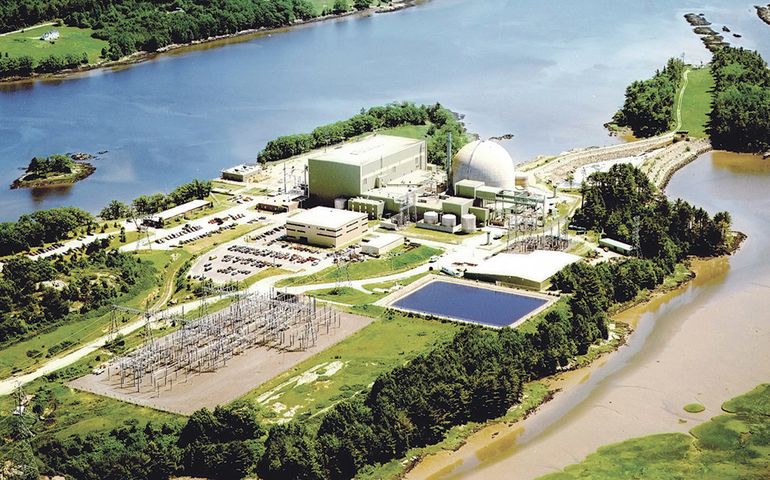
In the past 25 years, renewable energy in Maine moved into the mainstream
The energy mix of Maine’s power supply has undergone a substantial shift since 1994, when 33% of the state’s net electricity generation came from the Maine Yankee nuclear power station in Wiscasset and another 20% from petroleum-fueled generation.
Maine Yankee’s prominence began to change as the aging nuclear plant, in service since 1972, became increasingly more difficult and expensive to run. In response to allegations of safety problems at the plant, the Nuclear Regulatory Commission started a lengthy investigation in 1995. NRC identified so many problems, Maine Yankee’s owners determined it would be too costly to fix them and decided to permanently shut the plant down in August 1997. The eight-year $500 million decommissioning process was completed in 2005.

Maine’s energy profile underwent a sea-change in the new millennium, spurred by several major drivers:
- Slow-but-steady advances in renewable energy sources and market incentives such as the Regional Greenhouse Gas Initiative (2007) encouraging greater use of clean (i.e. non-fossil-fuel) energy;
- The 2000 deregulation of the two major electric utilities, Central Maine Power and Bangor Hydro, forcing them to sell their power-generation assets;
- The 2008 Wind Energy Act, which set ambitious goals of installing 2,000 megawatts of wind capacity in the state by 2015, 3,000 megawatts by 2020 (with at least 300 megawatts coming from offshore turbines) and 8,000 megawatts by 2030 (with at least 5,000 megawatts offshore).
Although those wind energy goals haven’t been met — Maine had roughly 925 megawatts and 19 operating wind farms by 2018 — wind turbines produce 20% of the state’s net electricity and account for two-thirds of all wind-powered generation in New England.
According to the U.S. Energy Information Administration’s most recently updated profile (based on June 2018 data), almost 85% of Maine’s net electricity generation came from renewable sources, with almost 33% from hydroelectric dams, 25% from biomass generators using mainly wood waste products, and 20% from wind turbines. In addition, almost 20% of net generation came from natural gas. The rest of Maine’s net electricity generation came from petroleum, coal, and solar power, according to the Maine State Energy Profile.
Maine’s largest electricity generating plant, the 827-megawatt William F. Wyman station in Yarmouth, burns No. 2 fuel oil and in recent years has been used only to meet peak power demand in the winter.
According to the U.S. Energy Information Administration, the industrial sector accounts for about one-fifth of Maine’s net electricity generation, the highest proportion of any New England state and one of the highest among all the states. Maine’s industrial sector primarily uses biomass, hydroelectric and natural gas turbines to generate power.
With its limited use of coal and petroleum for electricity generation, Maine is among the 10 states with the lowest carbon emissions, USEIA added.
Looking forward, Gov. Janet Mills announced that Maine had joined the U.S. Climate Alliance, a bipartisan coalition of 21 states committed to reducing greenhouse gas emissions consistent with the goals of the Paris Agreement. Mills said her office would seek to reduce Maine’s greenhouse gas emissions by 26% to 28% by the year 2025 and by 80% by 2050. She also pledged that 80% of the state’s electricity would come from renewable energy by 2030 and 100% by 2050.
“A change is gonna come,” she said in a nod to the 1964 Civil Rights-era song by singer-songwriter Sam Cooke.


















1 Comments